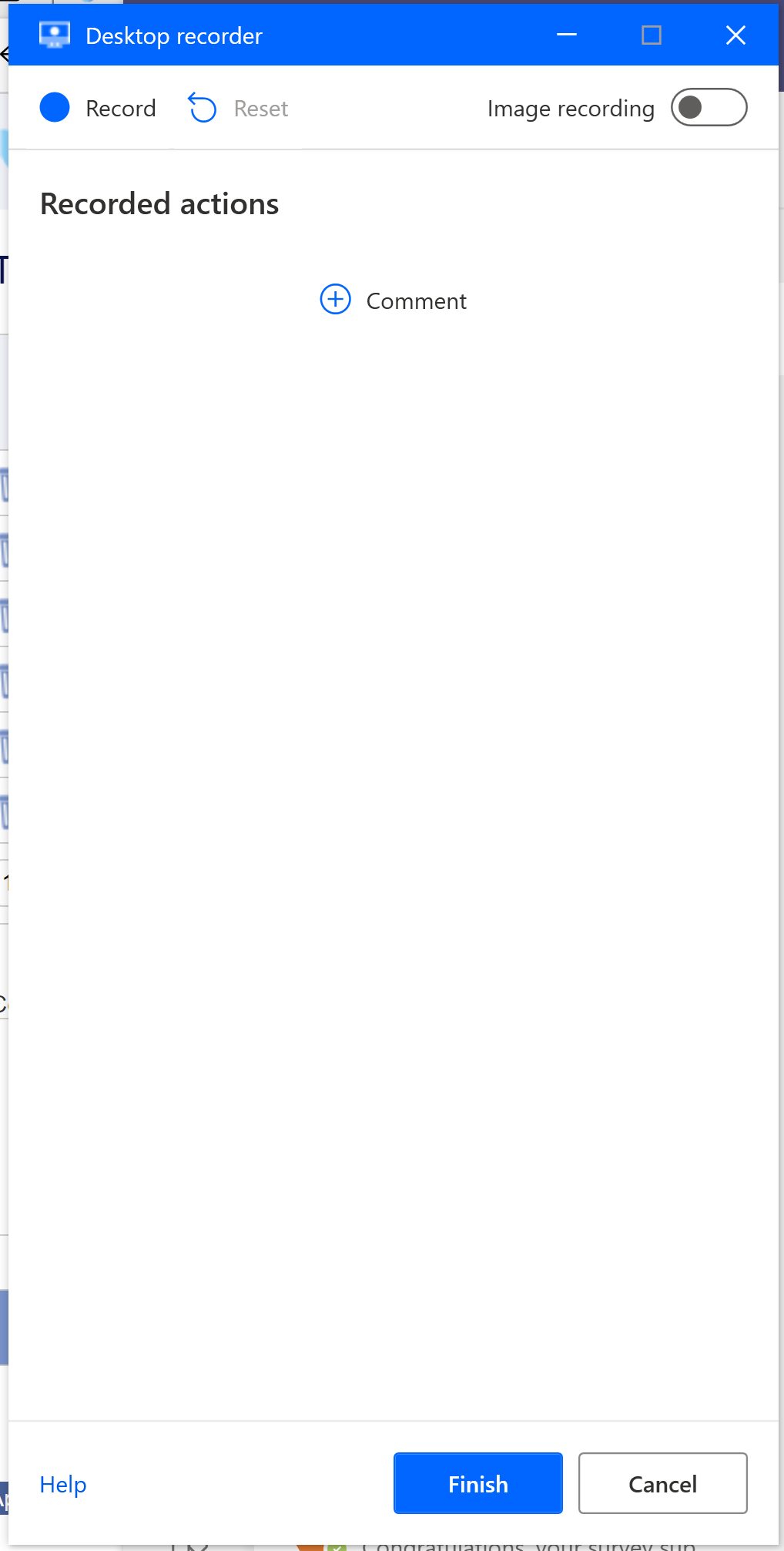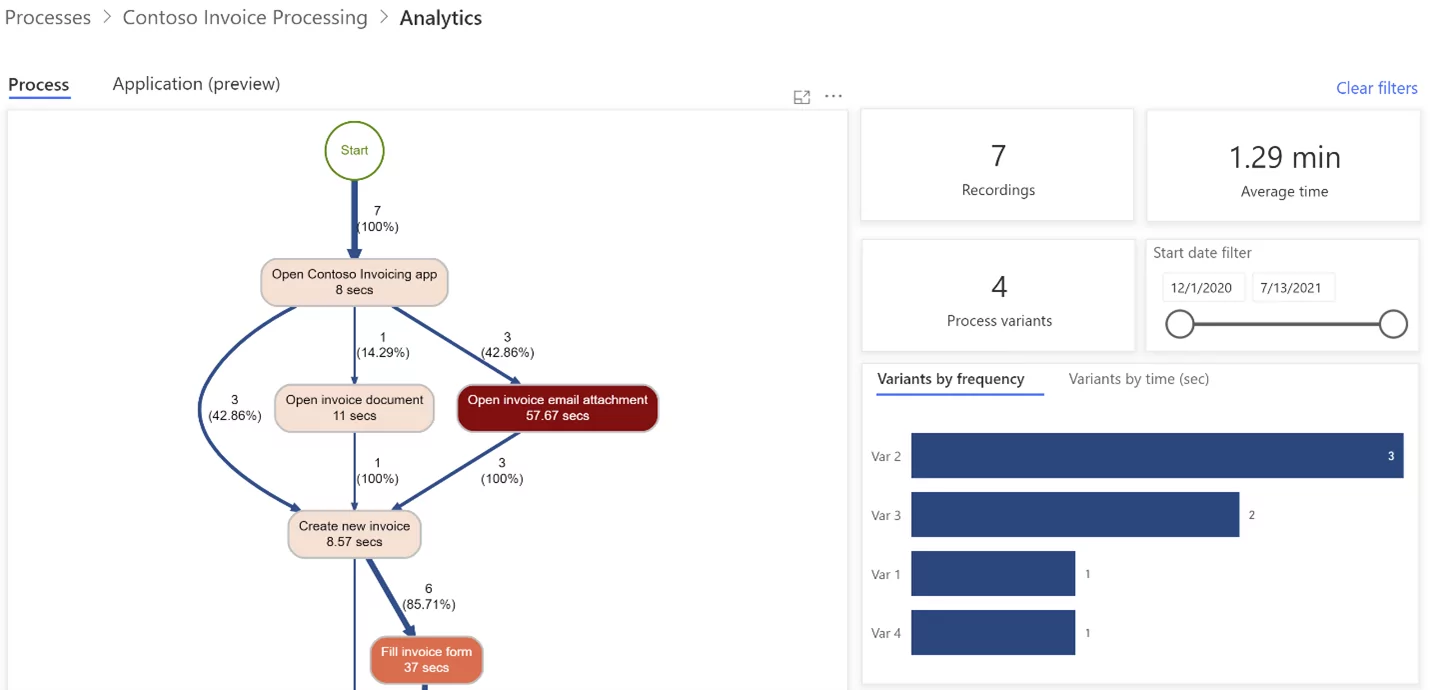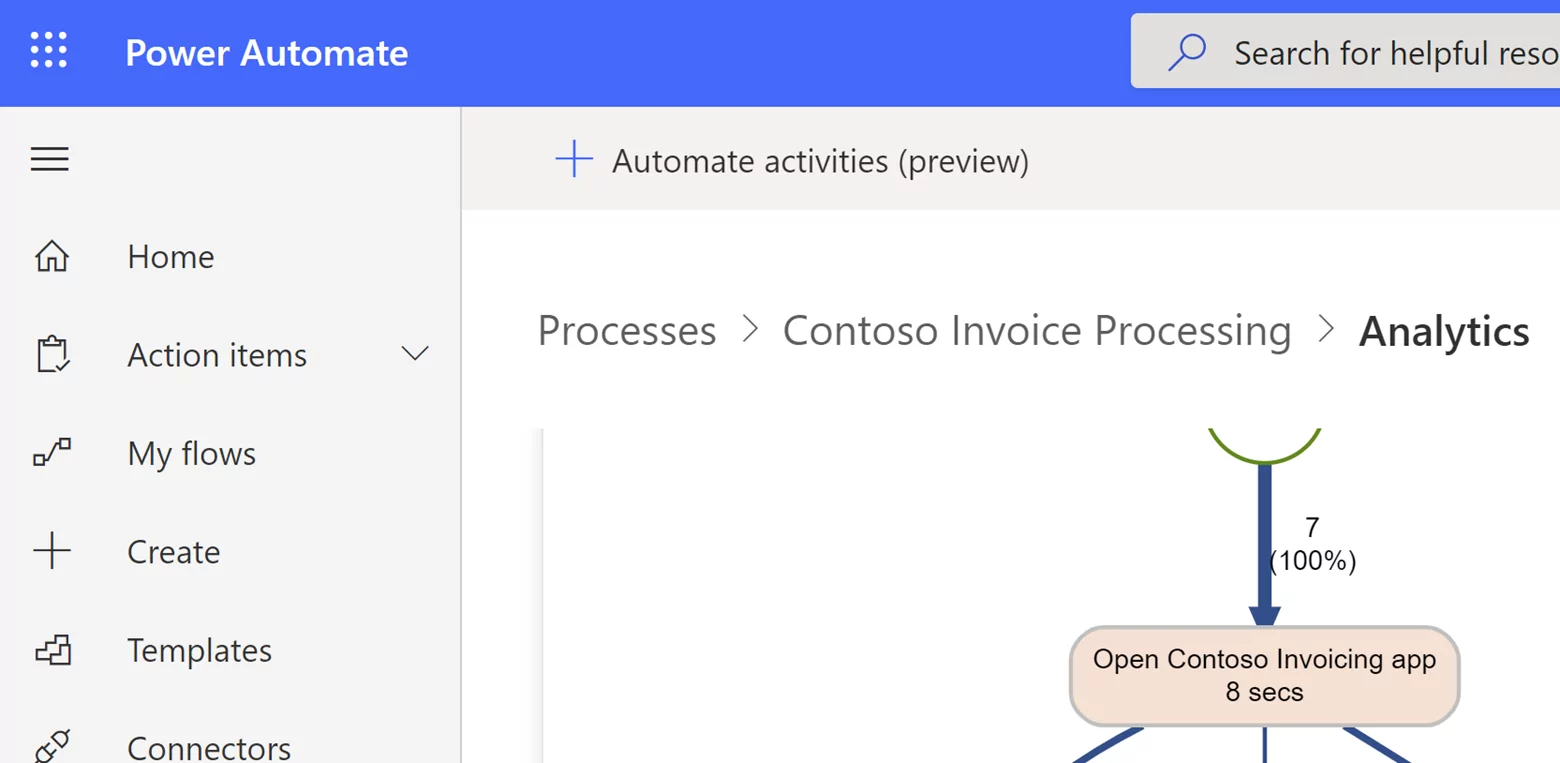Can The Power Automate Process Advisor Be Used as a Time Study Tool?
Microsoft has given us many tools over the years with multiple applications. The Process Advisor, now available in commercial, GCC, GCC High, and DoD environments, is simple enough to understand and use but has many potential applications.
What is the Process Advisor?
The Process Advisor is a tool included within Power Automate. It is used to record mouse clicks and keyboard keystrokes during a process. After recording a repetitive task, the recordings are uploaded and analyzed by the Process Advisor, making recommendations about how Power Automate can streamline the workflow.
Why is using a Process Advisor in Power Automate Important?
Automating processes saves time and Process Advisor shows you the way. After recording a process, it will break down the steps and recommend, on a per-step basis, what could be automated with cloud flows, desktop flows, RPA, and even AI models.
What is a Time Study?
A time study is precisely what it sounds like; studying the time it takes to complete a task. The goal of a time study is to document the steps necessary to complete a task and how long those steps take, on average. This information is then used to try to make the process more efficient and reduce how long the task takes. There are many ways to conduct a time study. They range from using a stopwatch and paper to using expensive time study software.
Once the information has been gathered, you must consolidate, clean, and analyze the information to decipher potential improvements. The good news is that the Process Advisor uses AI to do everything for you.
Challenges and Considerations
One of the major considerations whenever using the process advisor is the scope. In other words, what steps are going to be included when you record this task. For example, if you have a process to receive requests from customers through your website, email, and physical mailings, you may wish to scope your recordings to include all three or prioritize one.
Benefits of using a Time Study with Process Advisor
There are two tangible benefits of using the Process Advisor to conduct a time study. The first is the time savings when you receive your results in real-time versus all the work to manually consolidate the data and turn it into actionable information. The second is the immediate recommendation that Process Advisor gives you about how to leverage individual pieces of the Power Automate offerings to automate the process.
How Do I Get Started?
Install Power Automate Desktop here: https://docs.microsoft.com/en-us/power-automate/desktop-flows/install and follow the installation setup instructions.
After installation, open the Power Automate Desktop. Create a new flow, name it descriptively, and open the Desktop Recorder or Web Recorder depending on where this process resides.
Click Record, complete the task, then click Finish. Do this as many times as you would like (a minimum of two required for the next step), and multiple people conducting the same actions is recommended, so the tool has a lot of information to glean from.
After recording several examples of the same task being completed, have everyone upload their individual recordings to a shared area inside of the Process Advisor, which can be found in the Power Automate section of Microsoft Office, here:
Here you can click Create to add a new process and share it with your team. This will allow them a single place to upload their recordings for analyzing and keeping things organized.
After you have enough recordings uploaded to analyze (the minimum requirement is two recordings), you can select Processes to begin the analysis process. Here you can see everything that has been submitted for analysis, who submitted it, and what the Status is. Select Analyze at the top and all recordings will be Analyzed at once; this may take a few minutes.
Once it successfully analyzes your recorded processes, select the Analytics button.
Remember all those steps after completing your data gathering? The Process Advisor has already completed them. A flow chart has been created showing you the variance in the process. Times have been assigned to steps to show how long actions take. Actions that take longer have been color-coded with a red highlight to draw attention. Also, filters can be applied down the right side of the screen to dive into your data and really focus on what the major culprits are for increasing the length of time a task takes.
This works wonders for saving you time having to clean and organize data after the initial gathering phase of your time in motion study. But Process Advisor doesn’t stop there. At the top of the screen, there’s another helpful button.
This will launch another window with context from your process recordings. It will then take you to a new instance of Power Automate, where it recommends parts of these recordings that Power Automate can do for you. In short, the Power Automate Process Advisor took the time required to collect the data, submit it, analyze it, and use it to make recommendations for process improvements and reduce it drastically.
Outcomes
The results you receive are nearly instant and take the guesswork out of how to automate your current process. Using Power Automate to use computation power to do repetitive tasks will save you time and money. Process Advisor will get you there faster and using it as a Time Study tool will also have the added benefit of prioritizing the biggest wins as far as time savings is concerned.
RPA-in-a-Day
Microsoft has built a training that demonstrates exactly how to use the Process Advisor, coupled with AI, to their fullest potential. Within this training, an invoice process is analyzed. The bottleneck is identified when invoices arrive via email, and then the tool recommends an RPA process to automate that task.
Contact us to schedule your own RPA-in-a-day!












